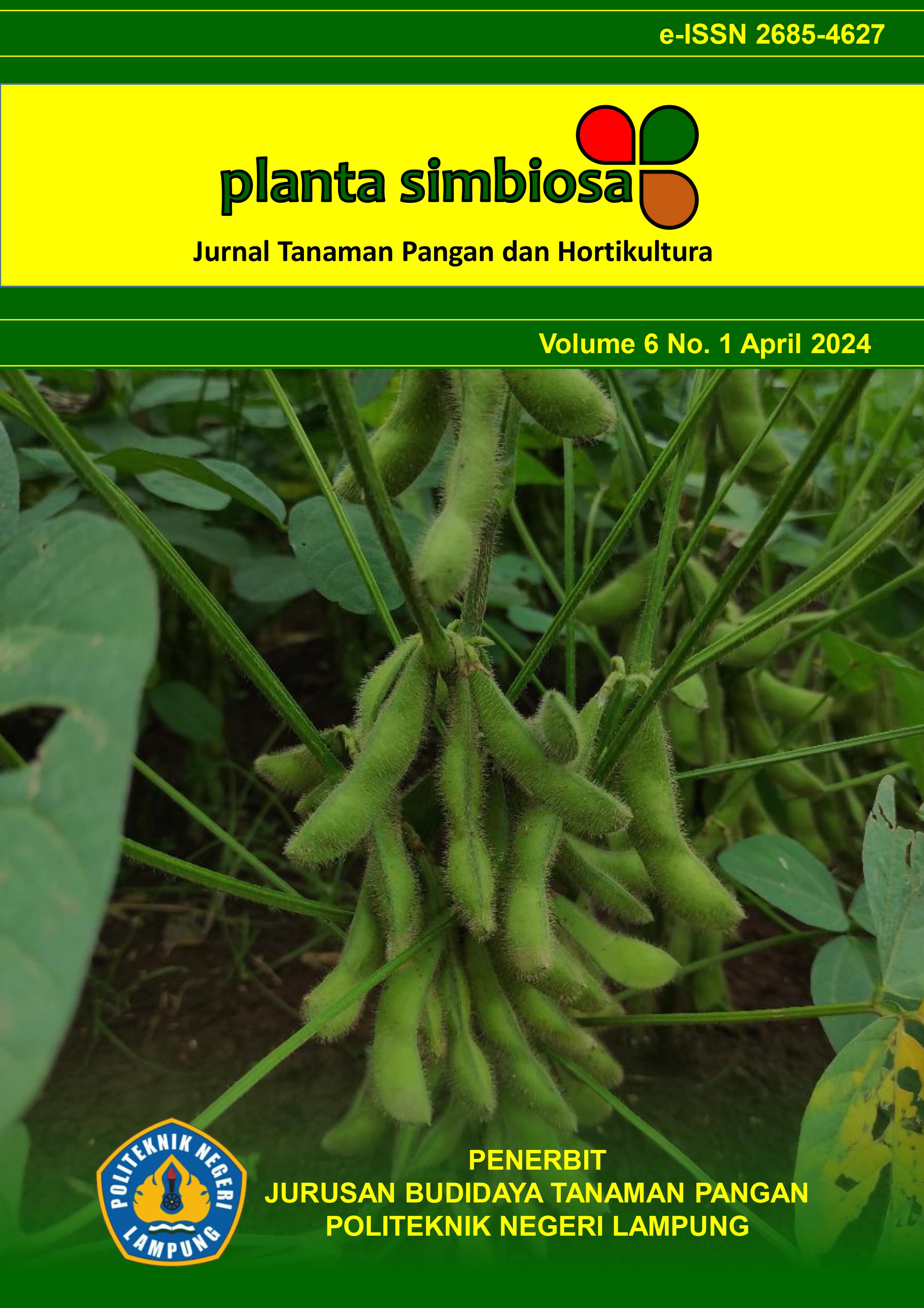Yield of Three Potential Shallot Genotypes with Different Organic Fertilizers
DOI:
https://doi.org/10.25181/jplantasimbiosa.v6i1.3552Abstract
Shallots that are cultivated intensively using inorganic fertilizers cause a decrease in land quality which has an impact on decreasing production, so it is necessary to use organic fertilizers to reduce the use of inorganic fertilizers. This research aims to determine the yield of three potential shallot genotypes with different organic fertilizers. This research used a factorial Randomized Complete Block Design (RCBD) with three replications. The first factor is three potential shallot genotypes consisting of Bima Brebes, Maja Cipanas, and Bauji. The second factor is the provision of organic fertilizer consisting of no application, manure, compost and bokashi. The results showed that Bima Brebes had the highest average growth and production compared to other genotypes. Organic fertilizer can improve all characters, except for the number of leaves, number of tillers, and fresh weight of bulbs. Bokashi gives the best results in increasing shallot growth and yield but is no different from compost. Keywords: Bima Brebes, Productivity, Genotype Testing.Downloads
Download data is not yet available.
Published
2024-04-29
How to Cite
Zulfahmi, R., Adzania Lestari, M. ., Purnama Sari, H. ., & Aulia Putrantri, D. . (2024). Yield of Three Potential Shallot Genotypes with Different Organic Fertilizers. J-Plantasimbiosa, 6(1), 68-73. https://doi.org/10.25181/jplantasimbiosa.v6i1.3552
Issue
Section
Artikel








